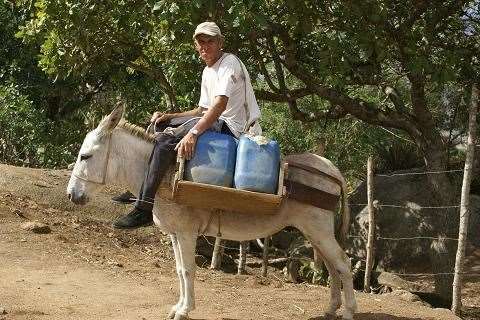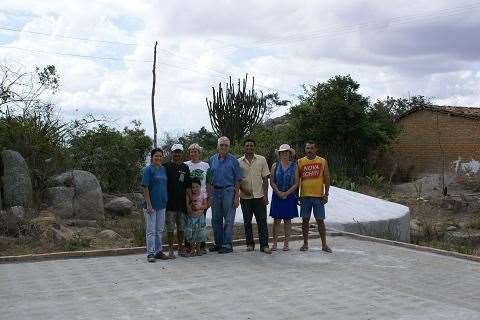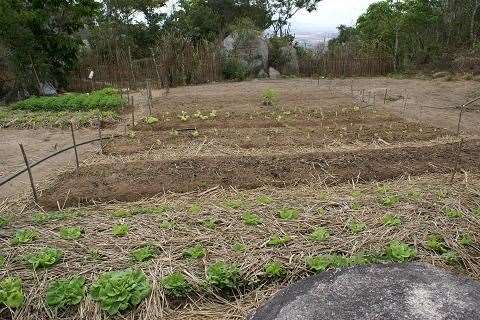I expect that it is the last thing you thought about today. And undoubtedly it is the single most important aspect of your daily life. Water! You probably started today with a morning shower….how many liters did that require? Coffee and breakfast ……more water! What about washing your clothes, watering the lawn, or cleaning the house?
We could learn a lot from our northeast Brazilian friends. The first time I visited the sisal growing area near Santa Luz, Bahia, where SHARE now has projects, they had not had rainfall for 2 years. On another occasion, I recall when Marge & I took a quick shower while staying with Betty Szilassy in Tacaimbo, Pernambuco, she asked us to trap the water we used in a large pan and this would be used to flush the toilet, water the garden or recycled for other cleaning needs.

Water transport technology in Brazil (above).
But I believe that things are improving. With government assistance, large “dams” have been built to trap scarce rainfall into ponds. Yes, the evaporation is very rapid in these hot, dry areas, but the rains can be torrential at times and this water was formerly all lost quickly. An amazingly successful project began in Brazil a few years ago called One Million Cisterns whereby NGO’s, Government, and Foundations have pooled resources to build a cistern for each house that will trap roof runoff and provide sufficient water for a household of 5 for one year. About 1/3rd of this goal has been achieved to date, and it is continuing to forge ahead. Phase II of this project is now expanding to trap water in large rock or cement catchments to be used for irrigation of crops and thus enabling diversification from monoculture.
Bob Thomas with friends standing on a new water containment structure (below).


Organic garden with irrigation system (above).
But, perhaps the most important aspect of water self-sufficiency is the political independence which it gives to poor, rural inhabitants. Traditionally, the wealthy landowner’s fazendas would include a monopoly over the only local lagoa or other water source. He could then use this power to coerce votes, to enforce his decisions, and to control subservient employees to accept unfair working conditions, biased sharecrop agreements, substandard housing and pittance remuneration. The pride and independence of a campesino that now has his own cistern is a joy to experience.
Think about it the next time you head to the water fountain. Do we really appreciate the water we have been blessed with?
Bob Thomas farms in southern Ontario and since 1991 has been volunteer Project Manager (South America) for the S.H.A.R.E. Agriculture Foundation.which supports projects with small, campesino farm groups in Brazil and Central America. Since 2000, he has also been taking groups of North American and European farmers on South American Ag-Ventures to see firsthand what is happening in Brazil, Argentina, Uruguay, Chile, Peru, Ecuador and Colombia.
In early January 2009, he arrived in Brazil. During the next few months, he will be providing commentary and pictures to FARMS.COM on what is happening in South America in both the commercial and small farmer sites.
He can be reached when traveling at robertwilliamthomas@hotmail.com and welcomes your comments and questions about South America’s agriculture and socio-economic conditions.
This commentary is for informational purposes only. The opinions and comments expressed herein represent the opinions of the author--they do not necessarily reflect the opinion of Farms.com. This commentary is not intended to provide individual advice to anyone. Farms.com will not be liable for any errors or omissions in the information, or for any damages or losses in any way related to this commentary